A Patriotic Look at the U.S. Flag Code
A Patriotic Look at the U.S. Flag Code
The flag of the United States is a living symbol that calls to our spirit, reminding us of the greatness of America. We cherish and uphold it because it is the standard of honor under which we live.
We view the flag with devotion, for it represents our national heritage of noble deeds, splendid accomplishment, and untold sacrifices which combined to establish the moral character of our country. Our flag is a symbol that makes our past one with the present and makes the present a foundation for tomorrow.
It signifies a people dedicated to liberty, justice and freedom for all.
It is our companion around the world. It summons confidence on sight. There is a magic in its folds that continually renews the hope that this nation, under God, will long be an example everywhere for all who love freedom with honor.
We give homage to the flag because it stands for the courageous, earnest, and unselfish experiences of our people who have given us strength as a nation and pride as citizens.
We respect our flag because we have respect for our fellow citizens, and because our love for country finds its center in our flag.
The customs and traditions which surround the display and use of our flag are guides to the means by which we as proud and grateful citizens may demonstrate the ultimate respect for the flag of our nation. In honoring and saluting our flag we demonstrate affection for our nation, fellow citizens and the proud future we share.
Flag Code History
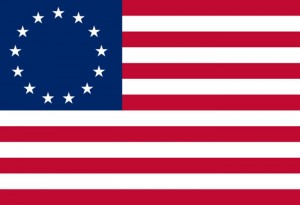 The United States Flag Code, first adopted in 1924 and amended through the present, prescribes flag etiquette for a variety of circumstances ensuring that our national symbol is treated properly.
The United States Flag Code, first adopted in 1924 and amended through the present, prescribes flag etiquette for a variety of circumstances ensuring that our national symbol is treated properly.
Always remember that the flag code is designed for “the use of such civilian groups or organizations as may not be required to conform with regulations promulgated by one or more executive departments of the U.S. Government.”
Thus, the flag code does not contain any penalties or enforcement provisions for noncompliance. Quite simply, it is a guide for civilians and civilian groups who wish to properly honor the United States of America’s principle emblem.
It should also be noted that each military branch has its own flag code of military etiquette; therefore, on matters concerning military flag etiquette, it’s recommend that you consult the specific branch code.
Parts of the Flag
Colors: The American flag is red, white and blue. Red symbolizes hardiness and valor; white stands for purity and innocence; blue means vigilance, perseverance and justice.
Stars: The 50 white stars in the blue rectangle of the flag represent the 50 states of the U.S. In 1818, President Monroe established there would be one star on the American flag for each state. This is also referred to as the “Union.”
Stripes: Thirteen stripes comprise the rest of the flag; seven red stripes alternating with six white stripes. These stripes stand for the original 13 colonies.
In 1795, after Kentucky and Maryland were admitted, the American flag had 15 stripes (one for each state). The stripes stayed that way until 1818 when President Monroe decided there would be 13 stripes permanently.
Properly Displaying the Flag
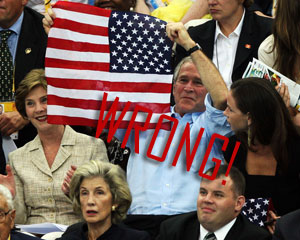 On A Wall: When displaying the flag against a wall either vertically or horizontally, the flag’s union (stars) should be at the top, to the flag’s own right, and the observer’s left.
On A Wall: When displaying the flag against a wall either vertically or horizontally, the flag’s union (stars) should be at the top, to the flag’s own right, and the observer’s left.
Across a Street: When the flag is hung on a wire or cable across a street, it should be hung vertically with the union to the north or east.
If the flag is suspended over a sidewalk and hung from a wire extending from a structure to a pole at the outer edge of the sidewalk, the flag should be displayed with the union (field of stars) farthest from the building.
Displayed from a Staff: When displayed from a staff, the flag should hold the position of superior prominence, in advance of the audience, and to the speaker’s right (facing the audience). If other flags are also displayed, they should be displayed to the speaker’s left.
When the flag is displayed from a staff projecting from a window, balcony, or a building, the union should be at the peak of the staff.
When another flag is displayed with the U.S. Flag and the staffs are crossed, the Flag of the United States is placed on its own right with its staff in front of that of the other flag.
Indoor Display: When the flag is suspended across a corridor or lobby in a building with only one main entrance, it should be suspended vertically with the union of the flag to the observer’s left upon entering. If the building has more than one main entrance, the flag should be suspended vertically near the center of the corridor or lobby with the union to the north, when entrances are to the east and west or to the east when entrances are to the north and south. If there are entrances in more than two directions, the union should be to the east.
In Multi-National Flag Displays: The Flag of the United States of America should be at the center and at the highest point of the group when a number of flags of states, localities or societies are grouped or arranged for display.
On a Lapel: When the flag is displayed as a lapel pin, it should be worn on the left lapel near the heart.
On Military Uniforms: Only the flag patches affixed to right shoulders of uniforms are reversed, so the blue field of stars faces forward. The reversal was inspired by the age-old practice of carrying flags into battle. When fastened to a standard, the American flag’s blue-and-white portion is always closest to the pole. A flag bearer rushing into the fray would naturally lead with the stars. In fact, it would be virtually impossible to lead with the stripes—the flag would simply wilt and wrap around the pole, rather than waving triumphantly in the wind.
For a serviceman or woman to lead with shoulder-borne stripes might smack of cowardice and retreat, as if one were backpedaling away from the conflict. The official Army guidelines on the donning of flag patches add that the forward-facing stars give “the effect of the flag flying in the breeze as the wearer moves forward.” So perhaps it’s best to think of every military person as a latter-day flag bearer, leading the headlong charge into battle.
Memorials, Burials and Funerals: When used to cover a casket or coffin, the flag should be placed with the blue field covering the head and over the left shoulder. The flag should not be lowered into the grave or touch the ground at any time. The flag should never be used as the covering for a headstone or other statue or monument.
Care and Respect
The U.S. Flag should always be treated with the utmost care and respect. Remember, the flag represents a living country and, as such, is considered a living symbol.
- Always display the flag with the blue union field up, never display the flag upside down unless it’s a signal of extreme distress.
- Always carry the flag aloft and free, never carry it flat or horizontally in processions or parades. The exception to this is carrying very large flags in a parade that are too big to be flown from a staff or pole.
- Always keep the flag clean. Keep it safe from those who would not respect it, or do not know enough to do so, such as young children.
- Always dispose of a worn flag properly, preferably by burning it.
Folding the Flag
To properly fold the U.S. Flag, follow these steps:
- Two people face each other, each holding one end of the flag. Stretch the flag horizontally at waist height and fold in half lengthwise.
- Fold the flag in half lengthwise again; the union (stars) should be on the top.
- One person holds the flag by the union while the other starts making triangular folds at the opposite end.
- Continue to fold the flag in triangles from the stripes end until only the blue field with stars is showing.
Saluting the Flag
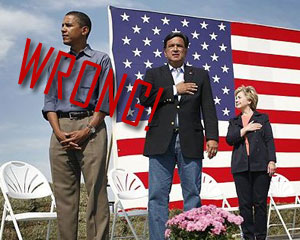 To salute the flag, all persons come to attention. All persons in uniform should give the military salute. Members of the Armed Forces and veterans who are present but not in uniform may also render the military salute. All other persons should salute by placing their right hand over their hearts. Men wearing a head covering (a hat, cap or other headwear) are to remove it. Women do not have to remove their head covering.
To salute the flag, all persons come to attention. All persons in uniform should give the military salute. Members of the Armed Forces and veterans who are present but not in uniform may also render the military salute. All other persons should salute by placing their right hand over their hearts. Men wearing a head covering (a hat, cap or other headwear) are to remove it. Women do not have to remove their head covering.
In parades or reviews, at the moment the flag passes, each individual should stand at attention facing the flag and salute.
The Flag of the United States is saluted as it is hoisted and lowered. The salute is held until the flag is unsnapped from the halyard or through the last note of the National Anthem, whichever is longer.
When the Pledge of Allegiance is recited, citizens should stand at attention and salute by placing their right hand over the heart with the first word and hold the salute through the last line of the Pledge. The salute is directed to the flag by facing it during the Pledge.
If the flag is not displayed during the pledge or anthem, face the music.
Half-Staff
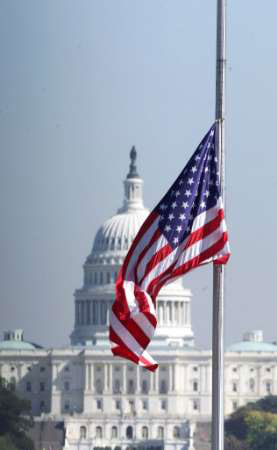 To position the flag at half-staff, first raise the flag to the peak of the staff for an instant and then lower it to the half-staff position — roughly halfway between the top and bottom of the staff. Before lowering it for the day, raise the flag again to the peak of the pole for a moment.
To position the flag at half-staff, first raise the flag to the peak of the staff for an instant and then lower it to the half-staff position — roughly halfway between the top and bottom of the staff. Before lowering it for the day, raise the flag again to the peak of the pole for a moment.
By order of the President, the flag shall be flown at half-staff upon the death of principal figures of the United States Government and the Governor of a State, territory, or possession, as a mark of respect to their memory. In the event of the death of other officials or foreign dignitaries, the flag is to be displayed at half-staff according to U.S. Presidential instructions, or in accordance with recognized customs.
In the event of the death of a present or former official of the government of any State, territory, or possession of the U.S., the Governor of that State, territory, or possession may proclaim that the National Flag shall be flown at half-staff.
The flag shall be flown at half-staff for thirty days following the death of the President or a former President; ten days following the day of death of the Vice President, the Chief Justice or a retired Chief Justice of the United States, or the Speaker of the House of Representatives; from the day of death until interment of an Associate Justice of the Supreme Court, a Secretary of an executive or military department, a former Vice President or the Governor of a State, territory, or possession; and on the day of death and the following day for a Member of Congress. The flag shall be flown at half-staff on Peace Officers Memorial Day, unless that day is also Armed Forces Day.
For those flags that cannot be displayed at half-staff, such as a flag that is hung flat against the wall, there is a tradition that is not mentioned in the U.S. Code that provides for the use of black ribbons as a sign of mourning. Two streamers of suitable length made of black crepe or ribbon should be attached at the top of the pole just below the finial or ornament at the top of the pole. For a flag that is displayed flat against a wall either vertically or horizontally, affix a streamer at each end of the top edge of the flag. Do not, however, fasten the streamers to the flag.
Flag Holidays
The flag may be displayed every day, subject to the conventions explained elsewhere on this site. On the days listed below it is particularly appropriate to display the flag.
- New Year’s Day – January 1
- Martin Luther King Day – Third Monday in January
- Inauguration Day – January 20
- Lincoln’s Birthday – February 12
- Washington’s Birthday – Third Monday in February
- Easter Sunday (date is variable)
- Mother’s Day – Second Sunday in May
- Peace Officers Memorial Day (half-staff) – May 15
- Armed Forces Day – Third Saturday in May
- Memorial Day (half-staff until noon) – Last Monday in May
- Flag Day – June 14
- Father’s Day – Third Sunday in June
- Independence Day – July 4
- National Korean War Veterans Armistice Day – July 27 (added January 6, 2009)
- Labor Day – First Monday in September
- Patriot Day (half-staff) – September 11
- Constitution Day – September 17
- Gold Star Mothers Day – Last Sunday in September
- Firefighters Memorial Day (half-staff) – Sunday before or on October 9th
- Columbus Day – Second Monday in October
- Navy Day – October 27
- Election Day – First Tuesday in November
- Veterans Day – November 11
- Thanksgiving Day – Fourth Thursday in November
- Pearl Harbor Remembrance Day (half-staff) – December 7
- Christmas Day – December 25
- State Birthdays
(and other days as may be proclaimed by the President of the United States.)
The flag should be displayed daily on or near the main administration building of every public institution.
Made in America
One addendum that we feel should be in place is buying American made flags only. We’ve all seen plenty of cheap “Made in China” flags and frankly its sickening.
Please, do your country a favor and only buy flags made in America!
This Article reflects the National Flag Code Foundation.






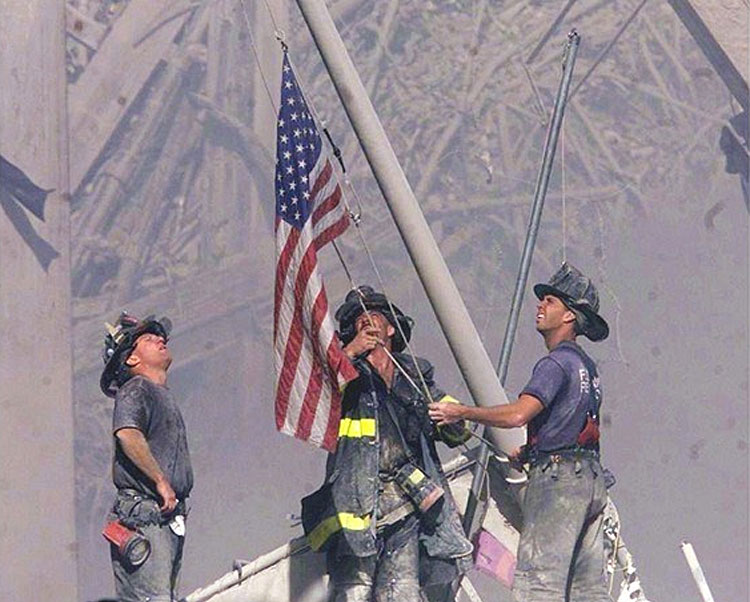





Discussion